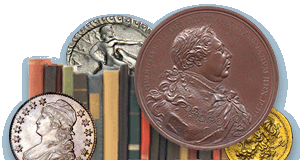
PREV ARTICLE
NEXT ARTICLE
FULL ISSUE
PREV FULL ISSUE
BANK OF AMERICA'S FRESNO EXPERIMENTCoins and paper money still aren't dead yet, but credit cards are a big and still growing way to pay for people worldwide. But these ubiquitous cards had to start somewhere, and that somewhere was Fresno, CA in 1958. This article delves into the rollout of what we now know as Visa. Here's an excerpt - see the complete article online. -Editor
This was September 18, 1958, and Joseph P. Williams had just unleashed the most audacious financial experiment in American history. Williams wasn't a banker—he was a former infantry officer who'd talked his way into Bank of America by driving cross-country and begging legendary founder A.P. Giannini for a job. By the mid-1950s, he was running the bank's think tank, tasked with solving an increasingly obvious problem.
The Problem That Wasn't Supposed to Exist What consumers needed was obvious: one card that worked everywhere. What nobody could figure out was how to make it profitable. Diners Club and American Express existed, but they were travel cards requiring full payment each month. Small banks had tried general-purpose credit cards but lacked resources to create merchant networks. Every attempt had failed. Williams studied those failures obsessively. Then he made a crucial insight: the magic wasn't in the card itself, but in creating a three-way system where banks, merchants, and customers all benefited simultaneously. His innovation wasn't technological—it was structural.
The Fresno Test On September 18, 1958, 60,000 Fresno residents opened their mail to find a BankAmericard with credit limits ranging from $300 to $500. Williams had secretly enrolled over 300 merchants beforehand. The brilliance was circular: customers received cards that immediately worked everywhere they shopped, while merchants joined a network that instantly included thousands of potential customers. The experiment wasn't an instant success. The bank lost $20 million and Williams was fired. But as you might guess, that wasn't the end of the story. -Editor ... Bank of America's management looked deeper. Beneath the chaos, they saw something remarkable: the concept worked. Customers loved the convenience. Merchants were making money. The infrastructure was sound—execution just needed refinement. They imposed strict controls and invested heavily in security. By May 1961, BankAmericard became profitable. Bank of America kept profitability secret until 1966. When truth emerged, competitors rushed in. By 1970, the program became Visa. Williams founded Uni-Serve Corporation, bought Chase's failed credit operations for $9 million, then sold to American Express three years later—proving he understood the business better than critics. Williams had created more than a payment method: a new relationship between Americans and money based on trust and instant credit. Today's Apple Pay and Venmo carry his DNA.
To read the complete article, see:
Here's a video that nicely summarizes the history. -Editor
To watch the video, see:
Wayne Homren, Editor The Numismatic Bibliomania Society is a non-profit organization promoting numismatic literature. See our web site at coinbooks.org. To submit items for publication in The E-Sylum, write to the Editor at this address: whomren@gmail.com To subscribe go to: Subscribe All Rights Reserved. NBS Home Page Contact the NBS webmaster 
|
